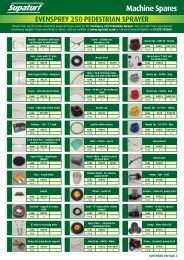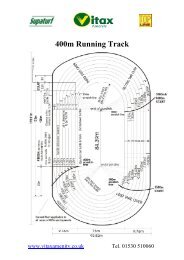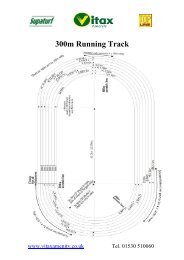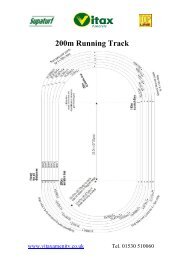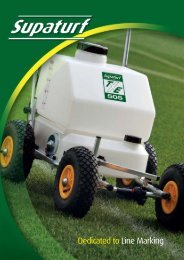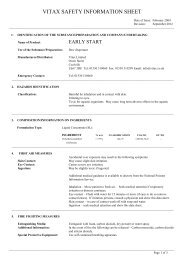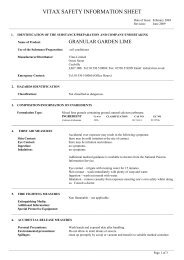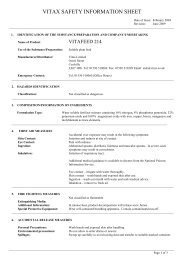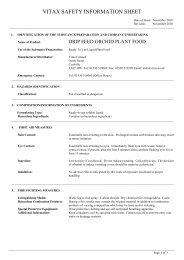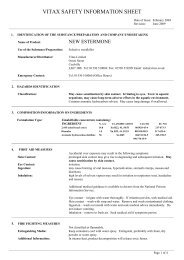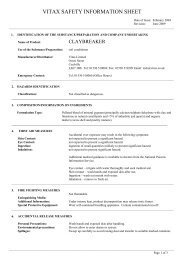Py Spray Insect Killer Concentrate - Vitax
Py Spray Insect Killer Concentrate - Vitax
Py Spray Insect Killer Concentrate - Vitax
Create successful ePaper yourself
Turn your PDF publications into a flip-book with our unique Google optimized e-Paper software.
VITAX SAFETY INFORMATION SHEET<br />
Date of Issue: February 2004<br />
Revision: June 2009<br />
__________________________________________________________________________________________________________<br />
1. IDENTIFICATION OF THE SUBSTANCE/PREPARATION AND COMPANY/UNDERTAKING<br />
Name of Product: PY SPRAY GARDEN INSECT KILLER<br />
Use of the Substance/Preparation: insecticide<br />
Manufacturer/Distributor: <strong>Vitax</strong> Limited<br />
Owen Street<br />
Coalville<br />
LE67 3DE Tel: 01530 510060 Fax: 01530 510299 Email: tech@vitax.co.uk<br />
Emergency Contact: Tel: 01530 510060 (Office Hours)<br />
________________________________________________________________________________________________________<br />
2. HAZARDS IDENTIFICATION<br />
Classification: Toxic to aquatic organisms, may cause long term adverse effects in the<br />
aquatic environment.<br />
________________________________________________________________________________________________________<br />
3. COMPOSITION/INFORMATION ON INGREDIENTS<br />
Formulation Type: Emulsion concentrate containing:<br />
INGREDIENT % w/w CLASSIFICATION CAS NO EC NO<br />
pyrethrins 1 Xn R20/21/22, 50/53 008003-34-7<br />
piperonyl butoxide 1 N R50/53 000051-03-6 200-076-7<br />
________________________________________________________________________________________________________<br />
4. FIRST AID MEASURES<br />
Accidental over exposure may result in the following symptoms:<br />
Skin Contact: not expected to be a primary irritant or skin sensitiser. Contact dermatitis and other<br />
allergic responses (sneezing, nasal discharge and stuffiness have been reported for<br />
crude pyrethrum extract).<br />
Eye Contact: slight irritation.<br />
Ingestion: low toxicity – irritation of mouth, throat and digestive tract and abdominal pains.<br />
Additional medical guidance is available to doctors from the National Poisons<br />
Information Service.<br />
Eye contact – irrigate with water thoroughly. If irritation persists, seek medical<br />
advice.<br />
Skin contact – wash with soap and water. Remove all contaminated clothing.<br />
Ingestion – wash out mouth with water. Obtain medical aid.<br />
Inhalation – remove to fresh air. If symptoms persist, obtain medical aid.<br />
________________________________________________________________________________________________________<br />
5. FIRE FIGHTING MEASURES<br />
Non flammable. Unlikely to pose significant hazard in fire.<br />
Extinguishing Media: Extinguish preferably with foam, dry powder, water spray or water fog. Contain<br />
contaminated run-off.<br />
Additional Information: Under intense heat, product decomposition may release carbon oxides.<br />
Special Protective Equipment: Wear self-contained breathing apparatus and suitable protective clothing in confined<br />
spaces.<br />
__________________________________________________________________________________________________________<br />
Page 1 of 3
VITAX SAFETY INFORMATION SHEET<br />
Date of Issue: February 2004<br />
Revision: June 2009<br />
__________________________________________________________________________________________________________<br />
6. ACCIDENTAL RELEASE MEASURES<br />
Personal Precautions: Wash hands and exposed skin after handling.<br />
Environmental precautions: Report to local water plc immediately if spillage enters drains and the Environment<br />
Agency or Scottish Environment Protection Agency if it enters surface or ground<br />
waters.<br />
Spillages: Soak up with absorbent material such as sand, transfer to suitable marked container<br />
and keep safe before disposal.<br />
________________________________________________________________________________________________________<br />
7. HANDLING & STORAGE<br />
Handling: Do not block stack pallets.<br />
Storage: Store in original containers, tightly closed in a secure, well ventilated, cool but frostfree,<br />
dry area. Store clear of foodstuffs. Make arrangements for containment of<br />
accidental spillage.<br />
_________________________________________________________________________________________________________<br />
8. EXPOSURE CONTROLS/ Occupational exposure standards (EH40) for pyrethrins in air: 5 mg/m 3 (8 hr) 10<br />
PERSONAL PROTECTION mg/m 3 (15 min).<br />
No specific personal protective equipment assigned. Normal good hygiene standards<br />
should be observed.<br />
_______________________________________________________________________________________________________<br />
9. PHYSICAL & CHEMICAL Appearance yellow liquid<br />
PROPERTIES Odour faint characteristic odour<br />
pH 6.5<br />
Boiling point not available<br />
Melting point not available<br />
Flash point not combustible<br />
Flammability not combustible<br />
Autoflammability not combustible<br />
Explosivity none<br />
Oxidising properties none<br />
Vapour pressure not available<br />
Relative density 1.002 at 20 deg C<br />
Solubility miscible in water<br />
Other data none<br />
_____________________________________________________________________________________________________<br />
10. STABILITY & REACTIVITY<br />
Stability: stable under normal storage conditions.<br />
Conditions to Avoid: pyrethrins are unstable in light and hydrolise rapidly in alkaline conditions with loss<br />
of insecticidal properties.<br />
Materials to Avoid: avoid strong oxidising agents, strong acids and bases.<br />
Hazardous Decomposition Products: combustion or thermal decomposition will evolve carbon oxides.<br />
________________________________________________________________________________________________________<br />
11. TOXICOLOGICAL Based on calculation<br />
LD50 acute oral rat > 2000 mg/kg<br />
LD50 acute percutaneous rat > 4000 mg/kg<br />
Patch testing of 1% pyrethrin solution indicated no primary irritation or sensitisation<br />
to human skin. Allergic responses have been reported for crude pyrethrin extract.<br />
__________________________________________________________________________________________________________<br />
Page 2 of 3
VITAX SAFETY INFORMATION SHEET<br />
Date of Issue: February 2004<br />
Revision: June 2009<br />
__________________________________________________________________________________________________________<br />
12. ECOLOGICAL INFORMATION <strong>Py</strong>rethrins are toxic to cold blooded animals. Harmful to aquatic organisms, may<br />
cause long term adverse effects in the aquatic environment. Apply away from<br />
bees.<br />
_______________________________________________________________________________________________________<br />
13. DISPOSAL CONSIDERATIONS Dispose of waste through a reputable waste disposal contractor.<br />
_______________________________________________________________________________________________________<br />
14. TRANSPORT INFORMATION Not classified as dangerous for carriage.<br />
________________________________________________________________________________________________________<br />
15. REGULATORY INFORMATION Harmful to aquatic organisms, may cause long term adverse effects in the<br />
aquatic environment. Occupational Exposure Standard in air: for pyrethrins 5<br />
mg/m 3 (8 hr) 10 mg/m 3 (15 mins).<br />
The (COSHH) Control of Substances Hazardous to Health Regulations may apply to<br />
the use of the product at work.<br />
________________________________________________________________________________________________________<br />
16. OTHER INFORMATION This product label provides information on the use of the product: do not use<br />
otherwise, unless you have assessed any potential hazard involved, the safety<br />
measures required.<br />
The information contained in this sheet is based on the best available information,<br />
including data from test results.<br />
The classification of this preparation was carried out in accordance with directive<br />
1999/45/EC and subsequent amendments modified by directive 2006/08/EC, taking<br />
account the directive 67/548/EC (Dangerous substances) modified by directive<br />
2004/73/EC and Regulation (EC) 1907/2006 (REACH).<br />
__________________________________________________________________________________________________________<br />
Page 3 of 3



